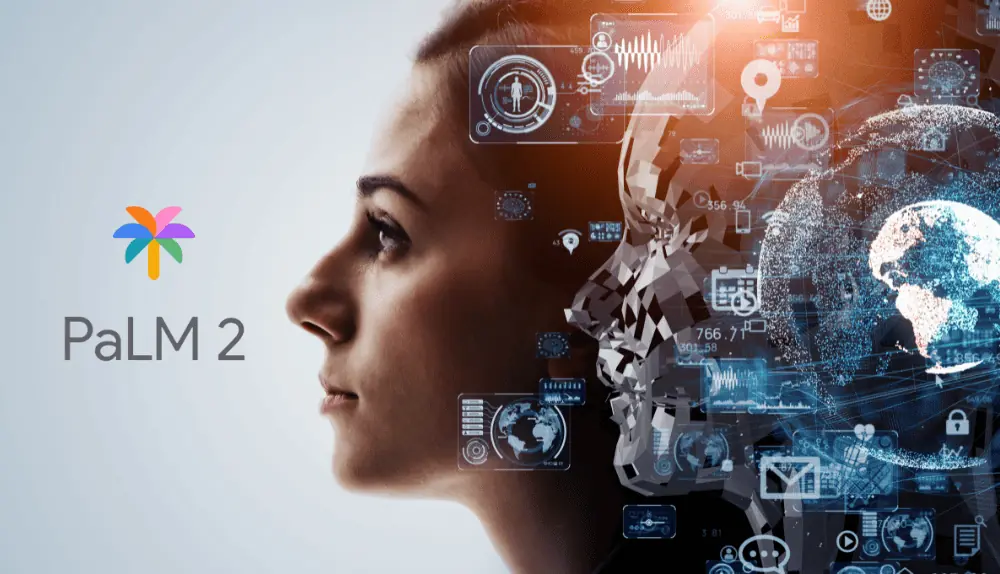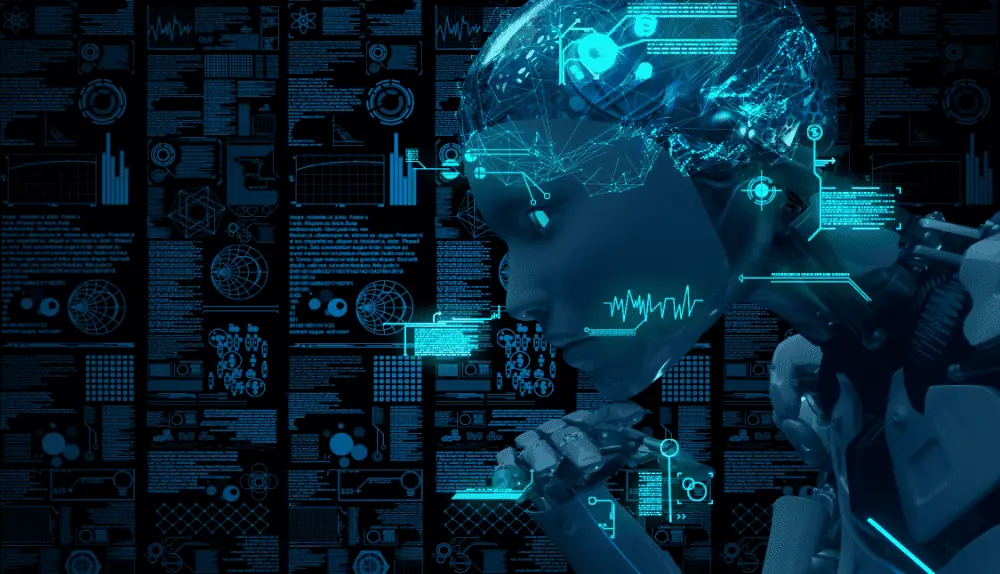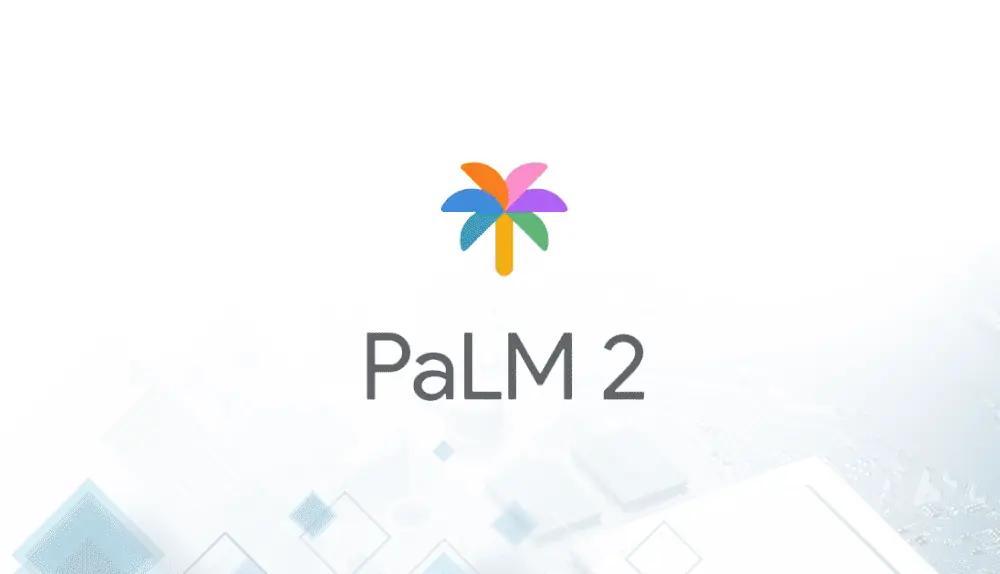With the ever-increasing prominence of artificial intelligence (AI) and its recent surge in popularity, the tech industry has witnessed fierce competition to harness its potential. Leading the charge in this AI arms race is none other than Google, the search engine giant. As the buzz around AI continues to grow, Google plans for integrating AI into 25 products.
At the forefront of innovation, Google’s dedication to incorporating AI into its vast ecosystem was showcased during the highly anticipated 2023 I/O developer conference. The company’s strategic approach promises to revolutionize user experiences across multiple platforms and services, marking a significant milestone in the future of human-computer interaction. In a flurry of blog posts and press releases, Google outlined the extensive infusion of AI, solidifying its commitment to stay ahead in this rapidly evolving technological landscape.
What is Google PaLM 2?
Google PaLM 2 represents the next generation of large language models crafted by Google, continuing its tradition of groundbreaking research in machine learning and responsible AI. PaLM 2 showcases remarkable progess in advanced reasoning tasks, encompassing areas such as coding, mathematics, classification, translation, answering questions, natural language generation, and multilingual support. It surpasses Google’s previous cutting-edge large language models in terms of performance. Rigorous assessments have been conducted on PaLM 2 to evaluate potential risks, capabilities, biases, and its applicability in both research and product implementations.
Features of Google PaLM 2?

Advanced Reasoning
Google PaLM 2 stands out in advanced reasoning tasks, demonstrating superior capabilities compared to its predecessors, including PaLM. It possesses the ability to break down complex tasks into simpler subtasks and exhibits a deeper understanding of the nuances of human language. PaLM 2 excels at comprehending riddles and idioms, which necessitate grasping the figurative and ambiguous meanings of words beyond their literal interpretation.
Multilingual Proficiency
By leveraging parallel multilingual text and a significantly expanded corpus of diverse languages, PaLM 2 surpasses its predecessor, PaLM, in multilingual proficiency. Its extensive pre-training enables PaLM 2 to excel in handling various multilingual tasks with remarkable fluency.
Code Generation
With extensive pre-training on vast datasets comprising web pages, source code, and more, PaLM 2 exhibits remarkable prowess in code generation. It excels in different programming languages that make it ideal for developers. It is also ideal for generating specialized coding languages.
Responsible AI
Grounded in Google’s commitment to responsible AI, PaLM 2 has undergone rigorous evaluation to address potential risks, biases, and its capabilities for research and in-product applications. It serves as a key component in other state-of-the-art models such as Med-PaLM 2 and Sec-PaLM, while also empowering generative AI features and tools at Google, including Bard and the PaLM API.
Generative AI Features and Tools
PaLM 2 serves as the foundation for various state-of-the-art models like Med-PaLM 2 and Sec-PaLM, fueling the development of generative AI features and tools at Google, such as Bard and the PaLM API. These user-friendly tools empower users to leverage the advanced capabilities of PaLM 2 effectively.
Rigorous Evaluation
PaLM 2 has undergone meticulous evaluation to assess potential harms, biases, and its capabilities for responsible deployment in research and in-product applications. This rigorous evaluation ensures that PaLM 2 is utilized in a responsible and ethical manner.
Wide Range of Applications
With its advanced capabilities, PaLM 2 finds applications in diverse fields such as medicine, security, language translation, and code generation, among others. Its versatility and proficiency enable it to excel across a wide range of tasks, opening up transformative possibilities in various domains.
In summary, Google PaLM 2 represents a powerful advancement in large language models, building upon Google’s rich heritage of breakthrough that involves research in responsible AI and machine learning. With its wide range of advanced capabilities, rigorous evaluation process, and applications in various fields, PaLM 2 paves the way for responsible and ethical utilization while facilitating transformative advancements in numerous domains.
Google Plans for Integrating AI into 25 Products – Which Are They?

Google Cloud AI & Machine Learning Products
Google Cloud offers a comprehensive suite of AI and machine learning products and services. These include Generative AI, Data Science, Responsible AI, Vertex AI, Vertex AI Workbench, AutoML, Cloud Natural Language, Dialogflow, Media Translation (Beta), Speech-to-Text, Text-to-Speech, Timeseries Insights API (Preview), and Translation AI. These solutions empower users with tools for building generative AI applications, data analysis, model interpretation, and more.
Google Workspace
AI integration is prominent within Google Workspace apps. Gmail incorporates AI-powered features like email drafting, replying, summarization, and prioritization, enhancing productivity and efficiency. In Docs, AI supports tasks such as brainstorming, proofreading, writing, and rewriting, improving content creation. Slides benefits from auto-generated images, audio, and video, simplifying the creation of engaging presentations.
Other Google Products
Google has seamlessly integrated AI technology into 25 products. Prominent examples include Lens and Translate. Lens leverages computer vision to identify objects within images and provide relevant information. Translate utilizes machine learning to deliver fast and accurate language translations, bridging communication gaps.
In conclusion, Google has made significant strides in integrating AI across its diverse product portfolio. By incorporating AI technologies into Google Cloud, Workspace, and various other products, Google aims to enhance user experience, deliver innovative solutions, and improve overall efficiency. Through these advancements, Google continues to lead the way in harnessing the potential of AI to transform the digital landscape.
Google AI vs. GPT 4
Google AI (PaLM 2)
Google AI encompasses a suite of products, solutions, and services leveraging Google’s research and technology. Among its advanced systems, PaLM 2 stands out as a foundational language model capable of reasoning, code generation, and multilingual translation. Supporting over 100 languages, PaLM 2 powers various Google products, including the conversational AI assistant Bard, as well as AI features in Docs, Sheets, and Slides.
OpenAI’s GPT-4
GPT-4, developed by OpenAI, represents their most advanced system to date. This large multimodal model accepts both image and text inputs, generating high-quality text outputs. GPT-4 excels in problem-solving, benefiting from its broader general knowledge and enhanced creative capabilities. It enables collaboration by generating, editing, and iterating on creative and technical writing tasks, adapting to the user’s writing style.
Comparison
Both Google AI (PaLM 2) and GPT-4 are advanced AI systems with diverse capabilities. However, their performance may vary depending on the specific task at hand.
For instance, in a comparison between Google Bard (powered by PaLM 2) and ChatGPT (powered by GPT-4), Bard displayed strength in categories like dad jokes and argument dialogues. On the other hand, ChatGPT outperformed in areas such as mathematical word problems and factual retrieval.
In conclusion, both Google AI (PaLM 2) and OpenAI’s GPT-4 are advanced systems with unique strengths and capabilities. While they share similarities in their ability to perform tasks like language generation and translation, they also have distinctive features that set them apart. Whether it’s the wide language support and integration with Google products offered by PaLM 2 or the collaborative and creative writing abilities of GPT-4, these systems showcase the ongoing advancements in AI technology from industry leaders like Google and OpenAI.
Benefits of Google AI
Improved User Experience
Google AI enhances the user experience through various integrated features across its Workspace apps. In Gmail, AI capabilities enable drafting, replying, summarizing, and prioritizing emails. Docs provides brainstorming, proofreading, writing, and rewriting assistance, while Slides auto-generates images, audio, and video content. These features empower users to work more efficiently and effectively, enhancing their overall productivity.
Innovative Solutions
Google AI delivers innovative solutions through a diverse range of AI and machine learning products offered via Google Cloud. These products include Generative AI, Data Science, Responsible AI, Vertex AI, Vertex AI Workbench, AutoML, Cloud Natural Language, Dialogflow, Media Translation (Beta), Speech-to-Text, Text-to-Speech, Timeseries Insights API (Preview), and Translation AI.
Generative AI enables the quick and efficient development of generative AI applications. Data Science provides tools for generating insights from data through comprehensive data management, analytics, and machine learning capabilities. Responsible AI offers frameworks and tools to understand and interpret machine learning models, ensuring ethical AI practices.
Vertex AI is a unified platform for building, deploying, and scaling effective AI models. Vertex AI Workbench serves as a single development environment for the entire data science workflow. AutoML empowers users to train high-quality custom machine learning models with minimal effort and expertise.
Cloud Natural Language utilizes Google’s machine learning capabilities to derive insights from unstructured text. Dialogflow enables the creation of conversational experiences across various devices and platforms. Media Translation (Beta) introduces real-time audio translation to content and applications.
Speech-to-Text accurately converts speech into text using Google’s AI-powered API. Text-to-Speech transforms text into natural-sounding speech, leveraging Google’s AI technologies. Timeseries Insights API (Preview) provides real-time large-scale time series forecasting and anomaly detection. Translation AI enables fast and dynamic machine translation, making content and applications multilingual.
Google AI offers numerous benefits to users, ranging from improved user experience in Workspace apps to innovative solutions available through Google Cloud’s AI and machine learning products. By leveraging AI technology, Google continues to enhance user productivity, provide advanced features, and foster innovation in various domains.
Future of Google AI
The future of Google AI holds tremendous potential for transforming various aspects of our lives. As technology continues to advance at an accelerated pace, Google is at the forefront of leveraging AI to develop innovative solutions and shape the future of artificial intelligence. Here are some key areas that indicate the exciting possibilities for Google AI in the future.
Enhanced Personalization
Google AI has the ability to analyze vast amounts of user data and provide personalized experiences across its products and services. As AI algorithms become more sophisticated, Google can tailor search results, recommendations, and advertisements to individual preferences, making user interactions more intuitive and relevant.
Improved Natural Language Understanding
Google’s advancements in natural language processing have already led to significant improvements in voice recognition and language understanding. In the future, we can expect more natural and seamless interactions with Google Assistant, Google Translate, and other language-based applications. The ability to understand context, emotions, and nuances in human language will pave the way for more sophisticated conversational AI experiences.
Advancements in Computer Vision
Google’s expertise in computer vision is likely to drive further breakthroughs in areas such as image recognition, object detection, and augmented reality. Enhanced computer vision capabilities can revolutionize industries like healthcare, manufacturing, and retail, enabling applications like medical image analysis, quality control in production lines, and virtual try-on experiences.
Ethical AI
As AI technology evolves, there is a growing emphasis on developing ethical and responsible AI systems. Google is actively working on ensuring transparency, fairness, and accountability in AI algorithms. The future of Google AI will likely involve continued efforts to address bias, interpretability, and privacy concerns, leading to more trustworthy and socially responsible AI applications.
AI in Healthcare
Google has already made strides in applying AI to healthcare research, diagnosis, and patient care. With further advancements, Google AI could play a significant role in areas such as disease detection, drug discovery, personalized medicine, and telemedicine. The integration of AI-powered tools and algorithms into healthcare systems has the potential to improve outcomes, reduce costs, and enhance accessibility to quality healthcare.
AI in Automation
As AI technologies become more powerful, they will increasingly automate routine tasks and workflows. Google’s AI capabilities can streamline business processes, optimize resource allocation, and enable autonomous systems. From intelligent virtual assistants to robotic automation, Google AI is likely to drive productivity gains and operational efficiencies across various industries.
Cross-domain Integration
Google’s vast ecosystem of products and services provides opportunities for cross-domain integration of AI capabilities. The integration of AI into platforms like Google Maps, Google Photos, and Google Workspace can enhance user experiences and enable new functionalities. Seamless integration across different domains will lead to a more interconnected and intelligent digital ecosystem.
The future of Google AI is undoubtedly exciting, with potential applications across numerous domains. However, it is important to recognize the ethical considerations and challenges associated with AI development, such as privacy, bias, and societal impact. By addressing these concerns and embracing responsible AI practices, Google can continue to shape the future of AI in a way that benefits society, fosters innovation, and empowers individuals and businesses worldwide.
Final Words
In conclusion, Google’s plans for integrating AI into 25 products mark a significant milestone in the evolution of the company’s technological ecosystem. With a relentless commitment to innovation, Google is poised to leverage the vast potential of artificial intelligence to enhance user experiences, streamline daily tasks, and shape the future of human-computer interaction. From Google Translate and Google Assistant to Google Photos and Google Lens, the integration of AI capabilities across these flagship products opens up a world of possibilities. With natural language processing, computer vision, and machine learning at its core, Google AI is set to revolutionize language translation, personal assistance, photo management, visual search, and more.
As Google continues to push the boundaries of AI research and development, we can anticipate advancements in personalized experiences, improved natural language understanding, and ethical AI practices. The future holds tremendous promise as Google AI expands its reach, crossing domains and empowering businesses and individuals alike. By seamlessly integrating AI into its diverse portfolio of products, Google is poised to shape the way we interact with technology, creating a future where intelligent systems enhance our lives in ways we never thought possible.
Frequently Asked Questions (FAQs)
How is Google using AI?
Google utilizes AI across its wide range of products and services. AI is employed in areas such as search algorithms, natural language processing, computer vision, speech recognition, recommendation systems, and more to enhance user experiences and provide intelligent solutions.
What is the impact of AI on Google Search?
AI plays a crucial role in Google Search. It helps improve search relevance, understand user queries better, provide more accurate and personalized results, and even anticipate user needs through features like Google’s “RankBrain” algorithm.
How does Google Translate use AI?
Google Translate employs AI techniques, such as neural machine translation, to enable language translation between different languages. AI algorithms analyze vast amounts of multilingual data to improve translation accuracy and fluency over time.
What is the role of AI in Google Photos?
AI is integral to Google Photos, where it enables automatic organization, categorization, and search capabilities. AI algorithms analyze images to identify people, objects, locations, and events, making it easier for users to manage and find their photos.
How does Google use AI in its virtual assistant, Google Assistant?
Google Assistant relies on AI to process and understand natural language queries, provide relevant information, perform tasks, and engage in conversations. AI enables the Assistant to improve its understanding and deliver personalized responses continuously.
Does Google prioritize ethical considerations in AI development?
Google is committed to responsible AI development and strives to address ethical considerations. The company focuses on transparency, fairness, and accountability in AI algorithms while also addressing concerns related to bias, privacy, and societal impact.
Is Google actively involved in AI research?
Yes, Google is actively involved in AI research. It invests in research initiatives through organizations like Google Research and DeepMind, collaborating with the scientific community to advance the field of AI and develop innovative algorithms and technologies.

